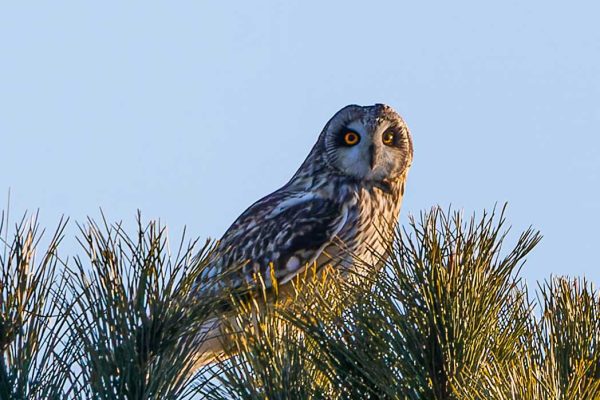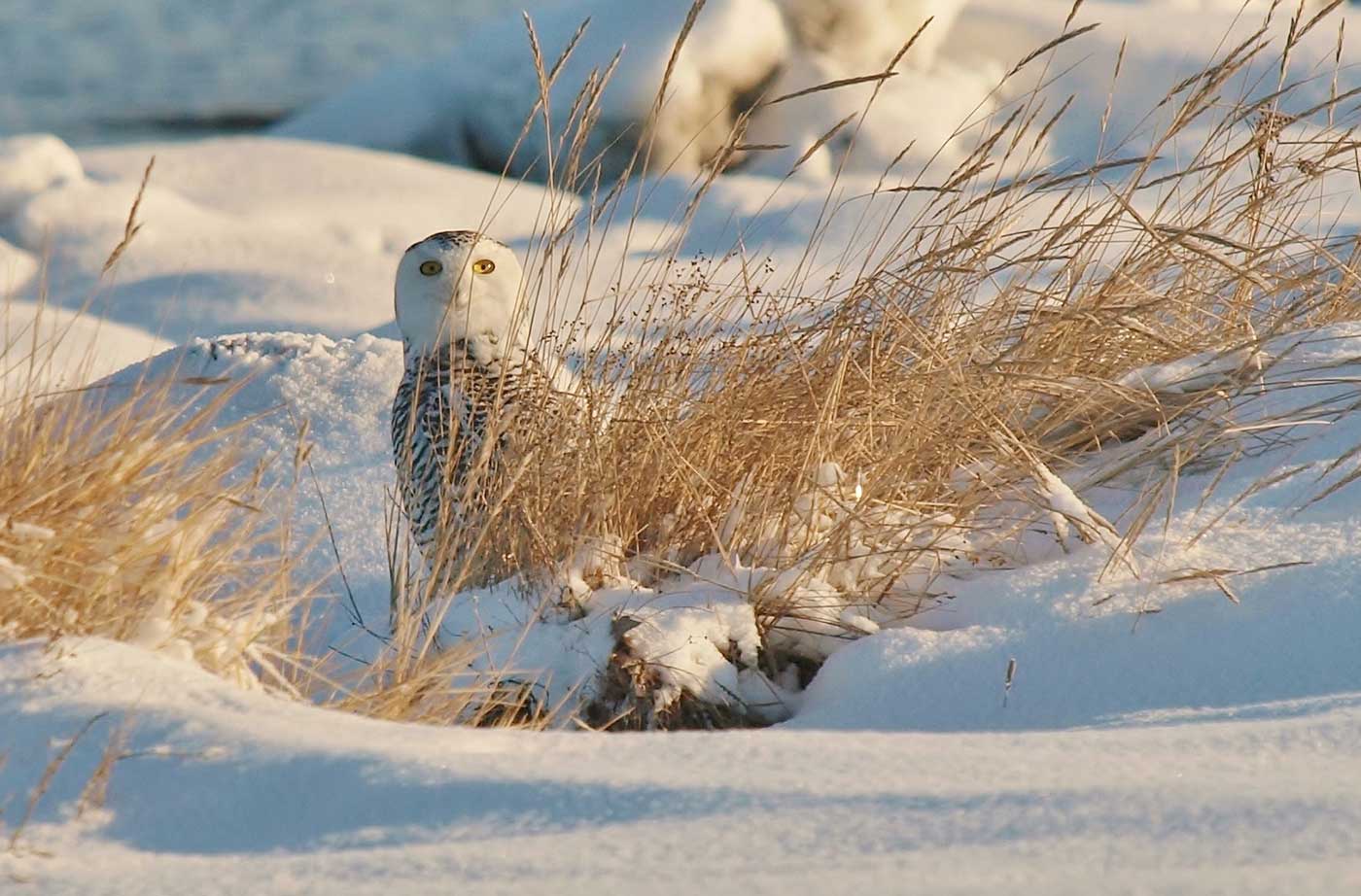
After 15 years of hoping to see a Short-eared Owl at one of their favorite local birding spots, the authors saw not one, but two in recent weeks. (Photo by Chris L’Abbe)
Fifteen years is a long time. It represents hundreds, maybe as much as a thousand trips to one of our favorite local birding spots. Our visits aren’t specifically to look for owls, but just about every time we’re there, we say the same thing: “This is the perfect place for a Short-eared Owl.” If we didn’t actually say it, we were thinking it.
Birders know all about this never-ending hope. So many places we visit regularly have a particular quality that inspires us to think that some unusual bird will eventually make an appearance.
To us, one of these places is an unassuming patchwork of hayfields in Richmond, an easy drive along the Kennebec from our home in Gardiner. Because it’s conveniently located near us, we often grab our binoculars and scope and head out to rejuvenate ourselves after a busy day of work.
Depending on the season and our grandiosity at any given time, we’ve told ourselves that these grasslands are the perfect place for: Snowy Owl, Sedge Wren, Yellow Rail, LeConte’s Sparrow, Henslow’s Sparrow, even Northern Lapwing.
And, especially, Short-eared Owl.
Just last week, we cruised through the grasslands at dusk, scanning the fields with our binoculars and uttering those words: “This is the perfect place for a Short-eared Owl.” Of course, we didn’t see anything.
But a few days later, we were scanning those fields again at dusk when suddenly there appeared in the fading light, against a gentle rise in the hayfield, the unmistakable buoyant, fluttery flight and distinctly rounded head of a Short-eared Owl.
We couldn’t believe it!
Before long we lost sight of it and moved to another section of the field. It was almost too dark to see when we heard an odd, gentle barking sound in the distance. We scanned into the sky and were shocked to see not one but two Short-eared Owls circling around and calling while ascending higher into the sky. Eventually they faded away into the darkness.
Short-eared Owls are, unlike most owls of our region, birds of open country. They are one of the most widespread owl species in the world, occurring across North America, Eurasia, and parts of South America and Africa. In North America, they breed across Canada and Alaska south to the northern U.S. Maine has a handful of breeding records, but Short-eared Owls are, at best, very rare and infrequent breeding birds in the state.

Snowy Owl is among a number of species the authors have always expected to see at a “perfect location” in Richmond. (Photo by Bill Bunn)
Although Short-eared Owls are not seen frequently in Maine, they do occur fairly regularly in migration and in winter. In some years a bird or two will stay long enough that many birders will have a chance to view them. In past years, wintering Short-eared Owls have revealed their presence to birders at Messalonskee Marsh in Belgrade and at the Brunswick Airport. We remember decades ago seeing at least one Short-eared Owl at the edge of the Augusta airport. One birding legend, the late Peter Vickery, found a wintering concentration of nine Short-eared Owls at different location in Richmond back in January of 1991. He continued seeing birds there into March of that year.
Wintering Short-eared Owls tagged in New York State were found to have originated from breeding grounds in northern Quebec and Labrador. We might expect birds visiting here in Maine to have come from this area, though we can’t be sure since there are limited tracking data available in the eastern part of their range.
The two Short-eared Owls we spotted have hung around for at least five days and were viewed from along the roadside and at a safe distance (for the owls) by a number of other birders. A few other Short-eared Owls have been seen recently in other parts of the state.
If you’ve ever said to yourself, “This looks like a good spot for a Short-eared Owl,” at some favorite birding spot, now is the time to go and check it. And remember, never give up hope!
Authors’ Note: We were comfortable sharing the location of these Short-eared Owls because they could be observed without disturbance to them. It is the general rule of birding that location of owls (and other sensitive species) is not made public unless protection of the birds can be ensured.
Banner photo: Short-eared Owl by Chris L’Abbé









Leave a Reply